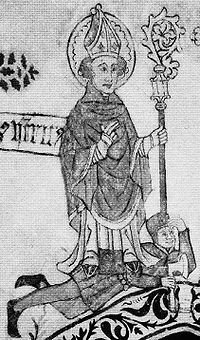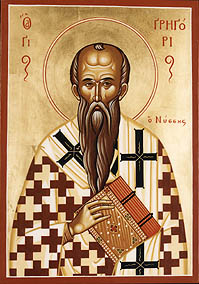Saints: January 2011 Archives

Saint Joan of Arc is a confusing figure for some these days. I think she's abused by the feminists who dash-off with her story for their own agenda which runs contrary to the authentic Christian woman, Joan. If you miss the fact of Joan's rootedness in Christ and the Church, then you miss the point of her life and work. The synthesis of the Pope's teaching is given here. The full texts follows below.
Our catechesis
today deals with Saint Joan of Arc, one of the outstanding women of the later
Middle Ages. Raised in a religious family, Joan enjoyed mystical experiences
from an early age. At a time of crisis in the Church and of war in her native
France, she felt God's call to a life of prayer and virginity, and to personal
engagement in the liberation of her compatriots. At the age of seventeen, Joan
began her mission among the French military forces; she sought to negotiate a
just Christian peace between the English and French, took an active part in the
siege of Orleans and witnessed the coronation of Charles VII at Rheims.
Captured by her enemies the next year, she was tried by an ecclesiastical court
and burnt at the stake as a heretic; she died invoking the name of Jesus. Her
unjust condemnation was overturned twenty-five years later. At the heart of
Saint Joan's spirituality was an unfailing love for Christ and, in Christ, for
the Church and for her neighbour. May the prayers and example of Saint Joan of
Arc inspire many lay men and women to devote themselves to public life in the
service of God's Kingdom, and encourage all of us to live to the fullest our
lofty calling in Christ.
 In Paul what is pointed out theologically was also
brought about physically: healed of his inner blindness, he sees clearly. Thus
St Paul was not transformed by a thought but by an event, by the irresistible
presence of the Risen One whom subsequently he would never be able to doubt, so
powerful had been the evidence of the event, of this encounter. It radically
changed Paul's life in a fundamental way; in this sense one can and must speak
of a conversion. This encounter is the centre St Luke's account for which it is
very probable that he used an account that may well have originated in the
community of Damascus.
In Paul what is pointed out theologically was also
brought about physically: healed of his inner blindness, he sees clearly. Thus
St Paul was not transformed by a thought but by an event, by the irresistible
presence of the Risen One whom subsequently he would never be able to doubt, so
powerful had been the evidence of the event, of this encounter. It radically
changed Paul's life in a fundamental way; in this sense one can and must speak
of a conversion. This encounter is the centre St Luke's account for which it is
very probable that he used an account that may well have originated in the
community of Damascus.
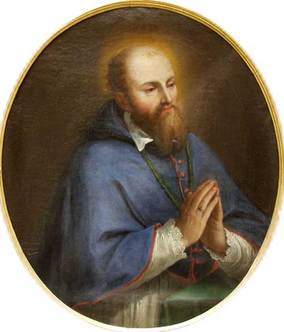
The Church's liturgical memorial for Saint Francis de Sales is a testimony to what can be done with a man of intelligence, humility, zeal for souls and love by God for the salvation of souls. De Sales is known as the modern Thomas à Kempis because of his book, Introduction to the Devout Life. He's also credited in assisting Saint Jane Frances de Chantal in founding the Order of the Visitation in 1610. Francis showed fatherly concern for the poor and refused ecclesiastical honors, e.g., the cardinal's hat, in favor of living as simple a life as possible as a bishop. The Church declared Saint Francis de Sales a Doctor of the Church.
The Church prays at the Liturgy:
O God, who for the salvation of souls willed that the bishop Saint Francis de Sales become all thing to all, grant that, following his example, we may always display the gentleness of Your charity in the service of our neighbor.
From Pius Parsch's The Church's Year of Grace
How Francis developed a gentle and amiable disposition is a story in itself; he was not born a saint. By nature his temperament was choleric, fiery; little was needed to throw him into a state of violent anger. It took years before he mastered his impatience, his unruly temper.
Even after he became bishop, there were slips, as for instance, when someone rang a bell before he had finished preaching. The important point, of course, is that by constant perseverance he did in time attain perfect self-mastery. Wherein lies a lesson.
+++
Today, please remember my Mother, Lynda, at the Altar. She's having her left knee replaced. May Saint Francis de Sales, pray for her and the medical professionals.
Let us keep the feast of blessed Agnes, and recall the kind of suffering she endured: in the full flower of her youth she died, and found life. She chose to love the Author of life alone; in the full flower of her youth she died, and found life. (the responsory) The Church gives us a young woman martyr of the early 4th century. She is thought to be about 12 or 13 (records are sketchy) Agnes was martyred under the Emperor Diocletian. 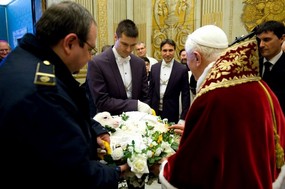 More often than not our remembrance of Agnes focuses less on her virginity and martyrdom --the supreme gesture of witness to the Lord-- and more on the fact that wool is given to the Pope. Sad but true. Agnes' witness to a life of virginity, possessing without possession, of a complete love for God. On this feast a tradition reaching back centuries lambs are raised by the Trappist monks of Tre Fountane in Rome bring to the Pope the wool that will be made into the pallia by the Benedictine nuns of the Abbey of Saint Cecelia (in Trastevere). The pallium is a white band of wool with six embroidered black crosses (the Pope's pallium is slightly different with red crosses and wider). The pallium is worn by the metropolitan archbishop for significant ecclesial events, i.e., Masses of Ordination, consecration of churches, altars, bishops, and on certain feast days. Unfortunately, the pallium is worn too often and without proper distinction of festivity and ecclesial communion with the Pope. The Servant of God Pope Paul VI issued a 1978 document, Inter Eximia, limiting the use of the pallium to the pope and metropolitan archbishops. In 1984, John Paul determined the date of the conferral of the pallia. Before given to the new metropolitan archbishops on June 29th, the feast of Saints Peter and Paul, the pallia rest for short time on the tomb of Saint Peter (the Confessio). You will recall that Saint Agnes is one of the seven women commemorated in the Roman Canon (the BVM would be the 8th). |
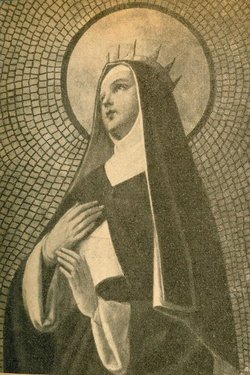
Saint Margaret of Hungary's "... friends and acquaintances petitioned for her to be acclaimed a saint almost immediately after her death. Among them was her own servant, Agnes, who rightly observed that this daughter of a monarch showed far more humility than any of the monastery's maids. Although their testimony expressed Margaret's overpowering desire to allow nothing to stand between her and God, the process of canonization was not complete until 1943. The island where her convent stood, called first the "Blessed Virgin's Isle," was called "Isle of Margaret" after the saint."
(Attwater, Benedictines, Bentley,
Coulson, Dorcy, Farmer)
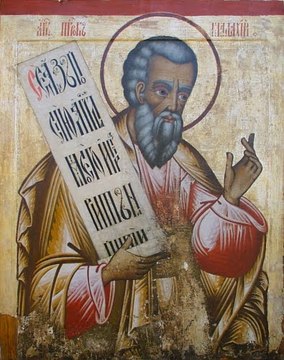
Commemoratio sancti Malachiae, prophetae, qui, post transmigrationem Babylone diem magnum Domini eiusque adventum in templum nuntiavit semperque et ubique mundam oblationem nomini eius offerendam. (Roman Martyrology)
The commemoration of
Saint Malachi, the prophet, who, after the Babylonian Exile, announced the
great Day of the Lord, his coming into the Temple, and that an immaculate
offering be made to His Name, always and everywhere.
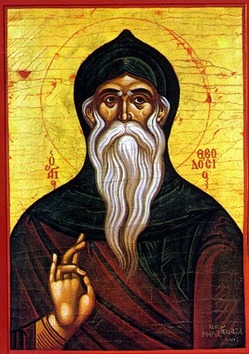 Planted in the courts of your Lord, you blossomed
beautifully with virtue, and increased your children in the desert, showering them
with streams of your tears, O chief shepherd of the divine flock of God. Therefore,
we cry to you: "Rejoice, Father Theodosius." Kondakion - Tone 8
Planted in the courts of your Lord, you blossomed
beautifully with virtue, and increased your children in the desert, showering them
with streams of your tears, O chief shepherd of the divine flock of God. Therefore,
we cry to you: "Rejoice, Father Theodosius." Kondakion - Tone 8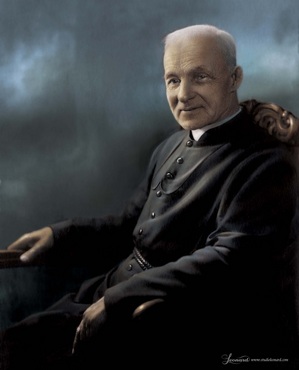

But we lack courage to keep a continual watch over nature, and therefore, year after year, with our thousand graces, multiplied resolutions, and fair promises, we run around in a circle of misery and imperfections. After a long time in the service of God, we come nearly to the point from whence we set out, and perhaps with even less ardor for penance and mortification than when we began our consecration to him.
Saint Elizabeth Ann SetonDivine Office, Office of Readings
There are very few American women who have had an impact on civil and religious society because today's saint, Elizabeth Ann Seton, with the work of education and hospitals and other institutions of culture that her order, the Sisters of Charity, did for all of us.
Ask Saint Elizabeth Ann Seton to intercede for us right now to help us to make Jesus known through acts of charity and mercy.

